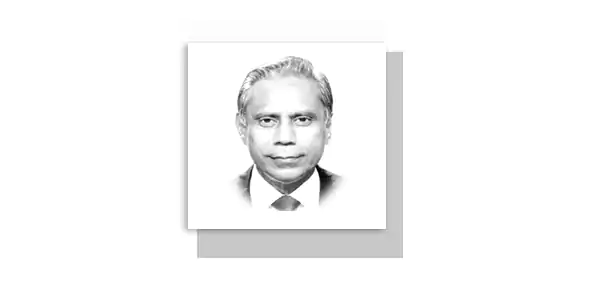THIS article is a continuation of a series of Op-eds based on my recent visit to China with a group of academics and media persons.
The previous article: ‘China’s story, told through Pakistani eyes’ covered the tour of Beijing. In 2010, to mark the 60th anniversary of Sino-Pakistani diplomatic ties, a media delegation visited China for the first time. Chongqing being a centerpiece of the itinerary—left a lasting impression with its soaring skyscrapers, dramatic riverscapes where the Yangtze, Jialing and Wujiang Rivers converge and awe-inspiring scenery like the Three Gorges, Dazu Rock Carvings, Wulong Karst Landscape and Jinfo Mountain—featuring in UNESCO’s heritage listings.
Returning 15 years later revealed a city astonishingly transformed. Beyond its scenic allure, Chongqing had redefined its skyline, revitalized heritage sites and emerged as a national epicenter of advanced manufacturing. Now boasting the world’s largest output of laptops and major production in vehicles and mobile phones across all 31 manufacturing sectors, the city is shaping a modern industrial ecosystem centered on intelligent New Energy Vehicles, next-gen IT and advanced materials. Services in software tech and logistics further anchor its transformation.
Strategically located at the crossroads of the Modern Silk Road, the Yangtze River Economic Belt and the 21st Century Maritime Silk Road, Chongqing connects inland China to global markets. Its logistics network is unrivaled: eastward shipping routes link it to the coasts, Africa and the Americas; the land-sea corridor reaches 556 ports across 127 countries; westward trains run to Europe; and air routes via Jiangbei International Airport span 41 international destinations, ranking it among China’s top aviation hubs with four runways.
Today, Chongqing champions open development, streamlined business practices and foreign investment—drawing 322 Fortune Global 500 firms to its landscape. Among the highlights of our visit was Chongqing Zaisheng Technology Co., Ltd., a key player in microfiber glass wool, filtration and insulation materials. Catering to sectors from aviation and rail to clean energy, the firm epitomizes Chongqing’s cutting-edge industrial ambitions. At the Eco Smart Gallery in Danzishi, along the riverbanks, we immersed ourselves in Chongqing’s urban evolution. This futuristic “city reception room” melds 5G tech, green design and immersive visuals to narrate the city’s past, present and future.
Cultural threads came alive at the Bayu Folk Custom Museum, nestled near Jiangbei Airport. From Qing Dynasty wood carvings to recreations of traditional Bayu weddings, the site offered a vibrant window into the region’s folk heritage. Western China International Communication Organization (WCICO)—with a mission to position Chongqing as a national and global media hub—spearheads international dialogue across public opinion, science and cultural exchange—its platforms including iChongqing and the Bridging News App lead English-language publicity efforts in the region. A brilliant manifestation of Belt and Road connectivity awaited at the International Logistics Hub Exhibition Center in Golden Bay • Intelligent Valley. Spread across 2.7 hectares and themed around eight developmental pillars, the center showcased Chongqing’s rise as a gateway city, deftly balancing urban growth with logistics infrastructure.
A nostalgic visit to Ciqikou Ancient Town brought back memories of this porcelain-era riverside settlement from the Ming and Qing dynasties. Strolling its alleys, framed by stilted homes and temple courtyards, one could feel old Chongqing breathing through the architecture, flavors and friendly warmth—especially around a shared hotpot dinner. The journey continued to Fuling District, rich in culture and industry. Famed sites like Project 816 and Baiheliang pair with a vibrant modern economy—Fuling hosts China’s largest shale gas field and the Chongqing Fuling Zhacai Group, China’s leading pickled vegetable industry. The Baiheliang Underwater Museum—our most unexpected marvel—lies 40 meters beneath the Yangtze River. The site preserves 165 inscriptions carved over 1,200 years, chronicling water levels since the Tang Dynasty. Protected in a no-pressure container and open to public view without diving, the museum stands as a symbol of innovative heritage conservation and has earned UNESCO acclaim.
In Jiulongpo District, with its 1.54 million residents and dynamic economy anchored by Chinalco Advanced Manufacturing, Qingling Motors and new energy sectors, we discovered yet another face of Chongqing’s industrial depth. Its 2024 GDP reached RMB 206 billion, with tourism adding vibrancy through sites like Chongqing Zoo. Before leaving for Kashgar, we toured the Minzhucun Community—a neighborhood born in the 1950s and reborn through participatory renewal. The model emphasizes co-creation and livability, aligning with priorities affirmed by President Xi Jinping’s 2024 visit, which underscored public well-being as core to modernization.
History resonated throughout our final leg. Chongqing, wartime capital during WWII and the Second Sino-Japanese War, served as the bastion of resistance after Nanjing’s fall. It hosted monumental negotiations in 1945 when Mao Zedong and Zhou Enlai engaged Chiang Kai-shek to avert civil war. The Red Rock Village Revolutionary Memorial Hall preserves that legacy. A deeply moving moment arrived when a 92-year-old retired engineer, who had met Mao and Zhou, greeted us with heartfelt emotion. Seeing Pakistanis, he embraced us and raised the enduring cry: “China & Pakistan are ‘Batie’—iron brothers.”
Fittingly, our final stop was Liziba Station—Chongqing’s surreal transit marvel where a monorail cuts through the 6th to 8th floors of a residential building. Rather than demolish the structure, city planners integrated the station into daily life. Today, it symbolizes urban ingenuity, attracting tourists who marvel at this seamless fusion of function and flair.
Note: Subsequent articles will cover this scribe’s impressions of Kashgar and Urumqi, delving into the local cultures, regional development and frontier innovation.
—The writer, Retired Group Captain of PAF, is author of several books on China.
(sultanm.hali@gmail.com)


















